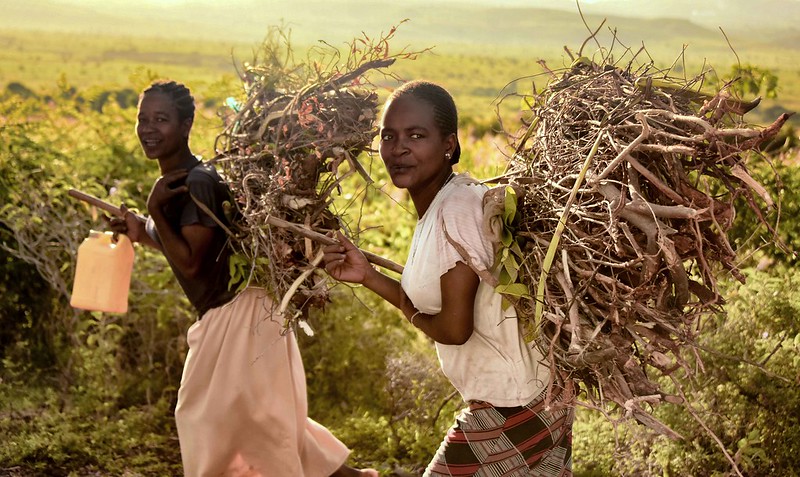Huairou Commission: Supporting Women’s Grassroots Movements

The Huairou Commission (HC) was established in 1995 at the U.N.’s World Conference on Women. Since then, it has grown from a tent of female community leaders in China into a global movement for women’s grassroots empowerment movements.
HC has two missions: reform the paradigm of how development policies undergo planning and implementation, and center female leadership in global, social-issue decision making. It aims to position women’s grassroots groups as agents of change and active development partners, helping make the world free from poverty, inequality, violence, insecurity and injustice. HC is an example of bottom-up development, an approach to international development that places local communities at the center of the process, with a specific focus on women’s grassroots movements in Asia, Africa and South America.
Why Women’s Grassroots Movements Matter
“Achieving gender equality and empowering women is not only the right thing to do but is a critical ingredient in the fight against extreme poverty, hunger and malnutrition,” says Food and Agriculture Organization of the United Nations (FAO) Director-General Jose Graziano da Silva.
The U.N. Sustainable Development Goals (SDGs) require the active involvement of poor and marginalized populations in both establishing and supporting sustainable systems. In this regard, civil society and women’s grassroots movements must be in dialogue with their governments, and HC works to facilitate these conversations.
The U.N.’s SDGs also emphasize identifying and combating social inequalities, including at grassroots levels. Women comprise 60% of those living with food insecurity in developing nations, placing them in an ideal position to lead the anti-poverty revolution. Ella Bhatt, founder of the Self-Employed Women’s Association (SEWA) highlights the crucial role of impoverished women as an untapped source of strength, known for innovative, inclusive and peaceful problem-solving approaches. She stresses that involving women in leadership is crucial for SDG success.
Despite women making up 43% of the labor force in the agriculture industry of developing countries, there is persistent discrimination against them in owning land and livestock, wage equality, participating in decision-making, and access to credit and financial services. It is estimated that if women had the same access to resources as men, productivity gains would skyrocket and global poverty would reduce by 150 million people. With the understanding that marginalized people are better able to determine their own needs and solutions, the HC strongly advocates for bottom-up development and locally driven policy-making led by women’s grassroots groups.
Ways HC Helps Women’s Grassroots Movements
The organization focuses on empowering impoverished women to develop resilience against economic shocks and natural disasters. This allows these women to drive decisions about their own development, particularly in cultures where men hold dominant roles.
HC works with international donors and financial partners to create Community Resilience Funds (CRFs), financial resources specifically intended to assist women’s grassroots groups in implementing initiatives focused on reducing disaster risks in impoverished communities. These funds serve the dual purpose of fostering collaboration between these groups and local or national governments to expand the reach of women-led projects.
CRFs are primarily allocated to women residing in economically disadvantaged rural and urban areas, which face significant exposure to natural disasters and extreme weather. For more than 10 years, CRFs have been extensively utilized across 21 countries. In 2018, they helped 2,675 women in impoverished and indigenous communities to spearhead resilience plans.
The Community Practitioners Platform For Resilience (CPPR), an HC initiative, unites various community groups to tackle issues such as natural disaster recovery, poverty and social inequality. It aims to foster collaboration among grassroots organizations, encouraging idea-sharing and joint projects in support of resilience development. By empowering grassroots efforts, CPPR emphasizes community-specific development processes and drives collective action toward sustainability and resilience, acknowledging the vital role of low-income area residents in tackling poverty, inequality and changing weather patterns.
CPPR is instrumental in enabling women and impoverished communities to take leadership roles in resilience planning. For example, the Shibuye Community Health Workers in Kenya — an HC member group — became empowered to establish a formal agreement with the Ministry of Agriculture that ensures agricultural subsidies reach impoverished households in regions affected by drought.
The Power of Women’s Grassroots Movements
The HC actively supports grassroots resilience programs that women lead to address community needs and mitigate the effects of natural disasters. It asserts that resilience is key to fighting inequality, injustice and poverty. Women in developing nations often face regular exposure to natural hazards and entrenched poverty and have acquired valuable, practical knowledge for community-level work. This expertise helps in creating solutions that combat poverty and foster sustainable responses to climate challenges and disaster risks. With HC’s support, these grassroots groups become catalysts for resilience, applying their knowledge to drive sustainable development from the ground up and foster solutions to modern challenges.
HC’s support for women’s grassroots movements represents an innovative approach toward addressing poverty and achieving various SDG goals. Its emphasis on locally driven change and bottom-up development places the beneficiaries of these solutions at the core of planning and implementation. Its efforts ensure the inclusion of women’s grassroots groups while also taking the lead in driving progress.
– Sam Waterkeyn
Photo: Flickr
